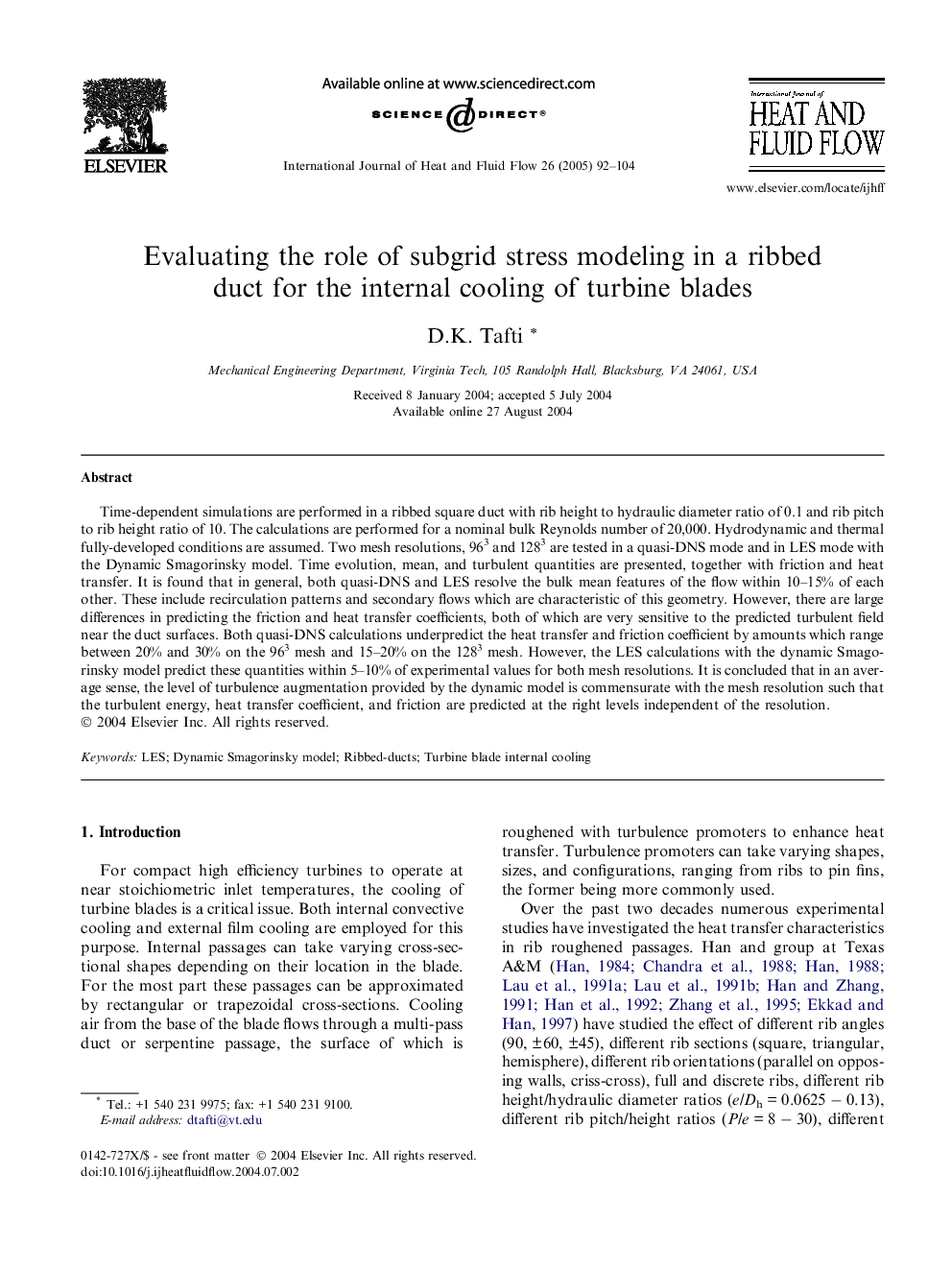| Article ID | Journal | Published Year | Pages | File Type |
|---|---|---|---|---|
| 9691171 | International Journal of Heat and Fluid Flow | 2005 | 13 Pages |
Abstract
Time-dependent simulations are performed in a ribbed square duct with rib height to hydraulic diameter ratio of 0.1 and rib pitch to rib height ratio of 10. The calculations are performed for a nominal bulk Reynolds number of 20,000. Hydrodynamic and thermal fully-developed conditions are assumed. Two mesh resolutions, 963 and 1283 are tested in a quasi-DNS mode and in LES mode with the Dynamic Smagorinsky model. Time evolution, mean, and turbulent quantities are presented, together with friction and heat transfer. It is found that in general, both quasi-DNS and LES resolve the bulk mean features of the flow within 10-15% of each other. These include recirculation patterns and secondary flows which are characteristic of this geometry. However, there are large differences in predicting the friction and heat transfer coefficients, both of which are very sensitive to the predicted turbulent field near the duct surfaces. Both quasi-DNS calculations underpredict the heat transfer and friction coefficient by amounts which range between 20% and 30% on the 963 mesh and 15-20% on the 1283 mesh. However, the LES calculations with the dynamic Smagorinsky model predict these quantities within 5-10% of experimental values for both mesh resolutions. It is concluded that in an average sense, the level of turbulence augmentation provided by the dynamic model is commensurate with the mesh resolution such that the turbulent energy, heat transfer coefficient, and friction are predicted at the right levels independent of the resolution.
Keywords
Related Topics
Physical Sciences and Engineering
Chemical Engineering
Fluid Flow and Transfer Processes
Authors
D.K. Tafti,
